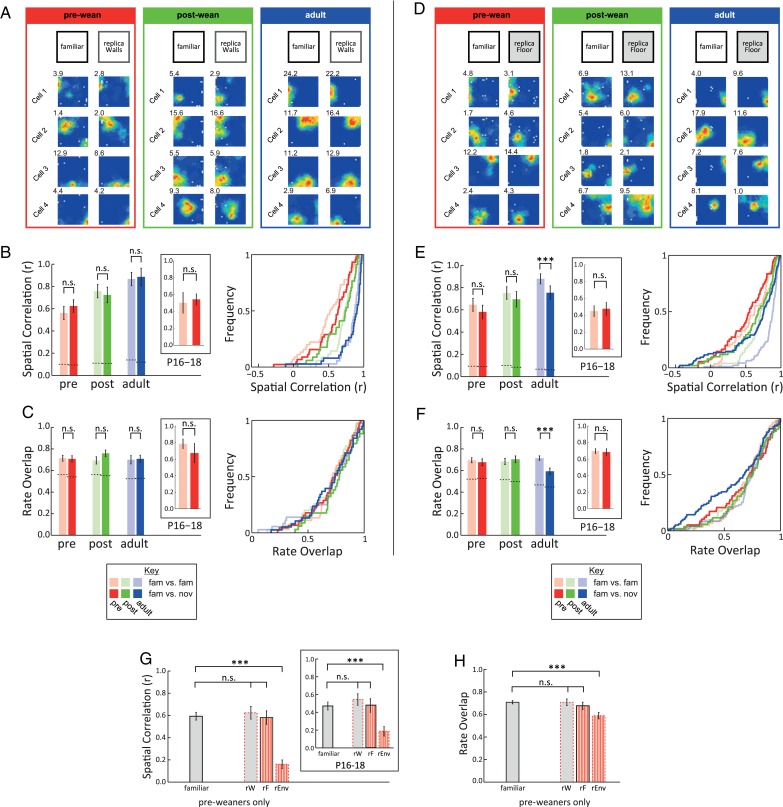Figure 3.
Pattern completion occurs in pre-weanling place cells. (A–C) Replacing the environment walls for a visually identical replica (“rWalls”) does not affect place maps. (A) Examples of place cell ensembles in familiar environment (familiar, left) and in the “rWalls” condition (“rWalls”, right), at different ages. (B) Average spatial correlation (mean ± SEM, left panel; CDFs, right panel) across familiar trials (pale colors) and familiar versus “rWalls” condition (bold colors), at different age groups (colors as in Fig. 1). Dotted lines indicate chance levels. Inset shows data for animals aged P16–18. (C) Average firing rate overlap (mean ± SEM, left panel; CDFs, right panel) across familiar trials (pale colors) and familiar versus “rWalls” condition (bold colors), at different ages. (D–F) Replacing the environment floor for a visually identical replica (“rFloor”) only affects place maps in adult rats. (D) Examples of place cell ensembles in familiar environment (familiar, left) and in the “rFloor” condition (“rFloor”, right), at different ages. (E–F) as in B and C but for familiar and “rFloor” conditions. (G–F) Pattern completion is already functional before weaning. (G) Spatial correlations (mean ± SEM) between familiar trials and the 3 trials with environmental manipulations of the local non-visual intramaze cues (“rEnv”, “rFloor”, “rWalls”) for pre-weanling animals only. Inset shows data for animals aged P16–18. (H) Same as G, but for firing rate overlap. n.s., P ≥ 0.05, ***P < 0.001.

